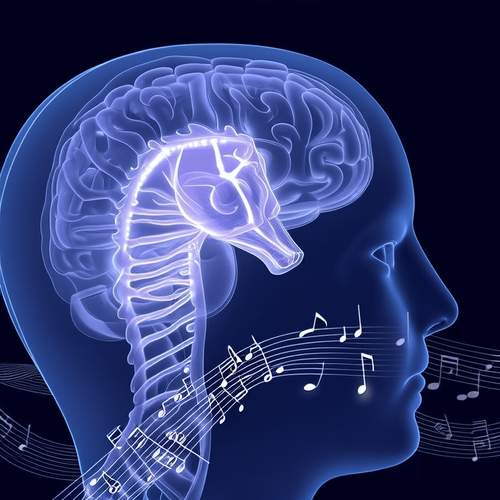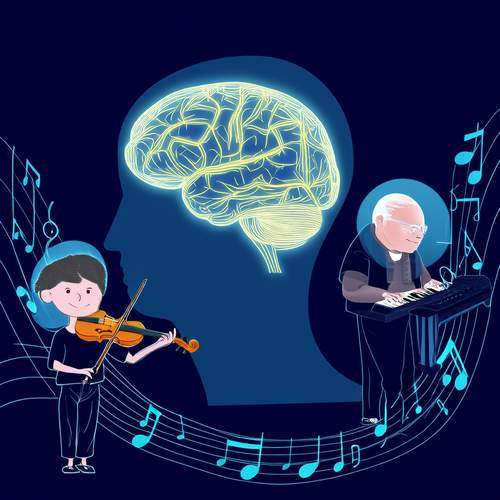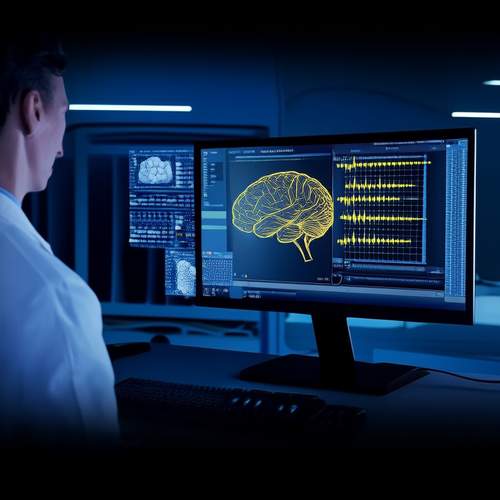The relationship between music and the human brain has long fascinated neuroscientists and music lovers alike. Recent advancements in functional magnetic resonance imaging (fMRI) have allowed researchers to explore this connection with unprecedented clarity. One of the most compelling discoveries is how music triggers the release of dopamine, a neurotransmitter associated with pleasure, motivation, and reward. This phenomenon not only explains why music can evoke such powerful emotions but also opens new avenues for understanding the brain's reward system.
Music as a Universal Language of Emotion
From ancient tribal chants to modern pop songs, music has always played a central role in human culture. Its ability to convey emotion transcends language barriers, suggesting a deep-rooted neurological basis. Studies using fMRI have shown that listening to music activates multiple brain regions, including the auditory cortex, limbic system, and prefrontal cortex. However, the most striking finding is the involvement of the mesolimbic pathway, which is responsible for dopamine release. This pathway, often referred to as the brain's "reward circuit," is the same system that responds to other pleasurable stimuli like food, sex, and drugs.
The Dopamine Effect: Why Music Moves Us
When we listen to music we enjoy, our brains release dopamine in two key phases: anticipation and peak pleasure. The anticipation phase occurs just before a favorite part of the song, such as a chorus or crescendo, while the peak phase happens at the moment of maximum emotional intensity. fMRI scans reveal that these phases correlate with increased activity in the nucleus accumbens, a critical component of the reward system. This dual-phase dopamine release may explain why we often feel a sense of buildup and release when listening to music, akin to the tension and resolution in a story.
Individual Differences in Musical Reward
Not everyone experiences music-induced dopamine release to the same degree. Research has identified a phenomenon called "musical anhedonia," where some individuals derive little to no pleasure from music despite having normal auditory processing. fMRI studies comparing these individuals to those who experience strong musical chills—goosebumps or shivers down the spine—show stark differences in dopamine-related brain activity. This variability suggests that the brain's reward system is highly personalized, influenced by factors such as genetics, upbringing, and even musical training.
Applications Beyond Pleasure: Music in Therapy
The link between music and dopamine has significant implications beyond mere enjoyment. Clinicians are exploring music therapy as a treatment for conditions like depression, Parkinson's disease, and chronic pain, all of which involve dysregulation of dopamine. For example, fMRI studies have demonstrated that rhythmic music can improve motor function in Parkinson's patients by stimulating dopamine production in the basal ganglia. Similarly, personalized playlists have been shown to alleviate symptoms of depression by activating the brain's reward pathways. These findings highlight music's potential as a non-invasive, accessible therapeutic tool.
The Future of Music and Neuroscience Research
As fMRI technology continues to evolve, so too will our understanding of music's impact on the brain. Future studies may explore how different genres, tempos, or harmonies affect dopamine release, or how cultural background shapes neural responses to music. There is also growing interest in combining fMRI with other techniques, such as EEG or PET scans, to paint a more comprehensive picture of the brain's musical processing. One thing is certain: the intersection of music and neuroscience promises to yield discoveries that resonate far beyond the laboratory.
In a world where music is often taken for granted as mere entertainment, science reminds us of its profound power. From the rush of dopamine during a favorite song to its therapeutic potential, music is far more than sound—it is a fundamental part of what makes us human. As research continues to unravel the mysteries of the musical brain, we may find new ways to harness its benefits for health, well-being, and sheer joy.

By /May 30, 2025

By /May 30, 2025

By /May 30, 2025

By /May 30, 2025

By /May 30, 2025

By /May 30, 2025

By /May 30, 2025

By /May 30, 2025

By /May 30, 2025

By /May 30, 2025

By /May 30, 2025

By /May 30, 2025

By /May 30, 2025

By /May 30, 2025

By /May 30, 2025

By /May 30, 2025

By /May 30, 2025

By /May 30, 2025

By /May 30, 2025